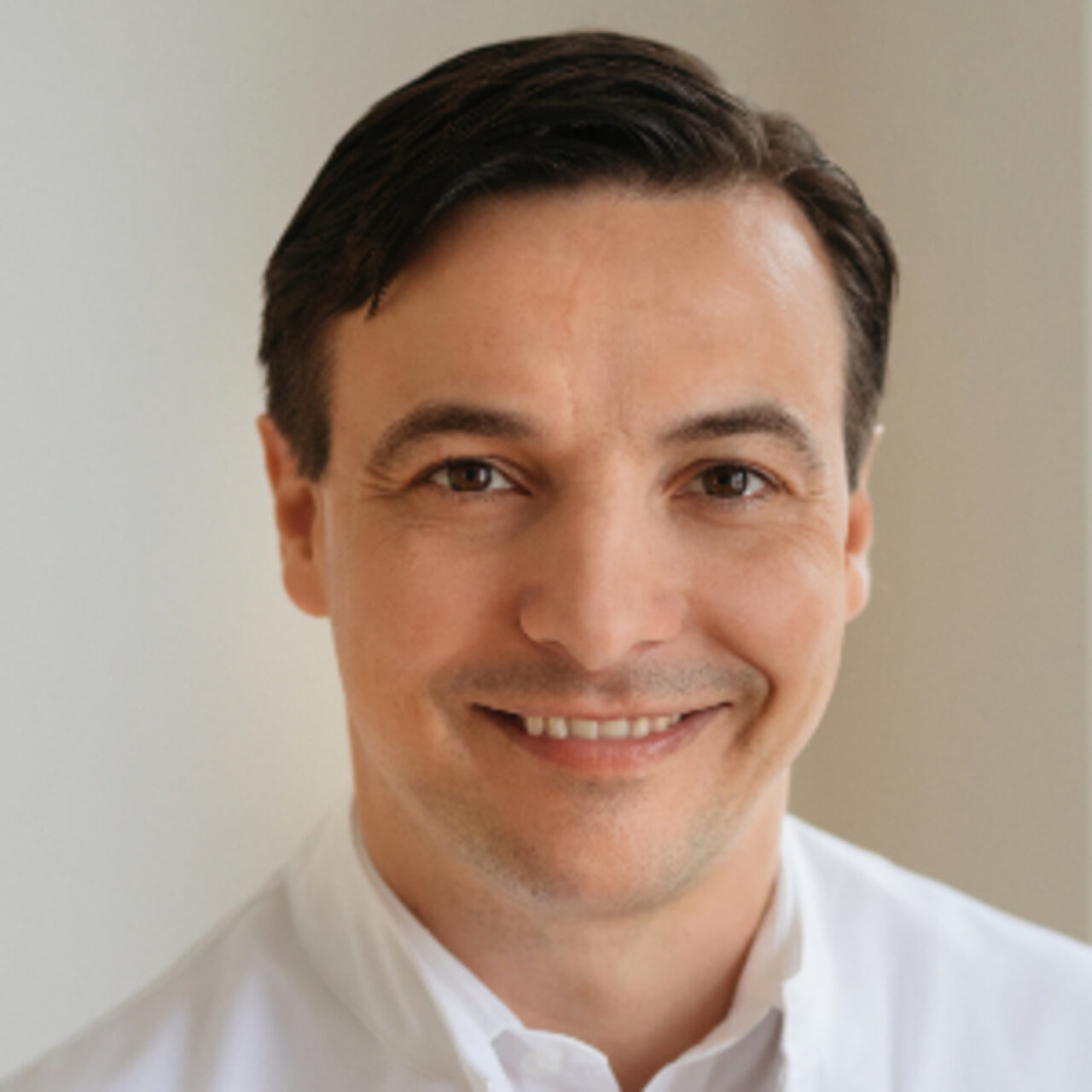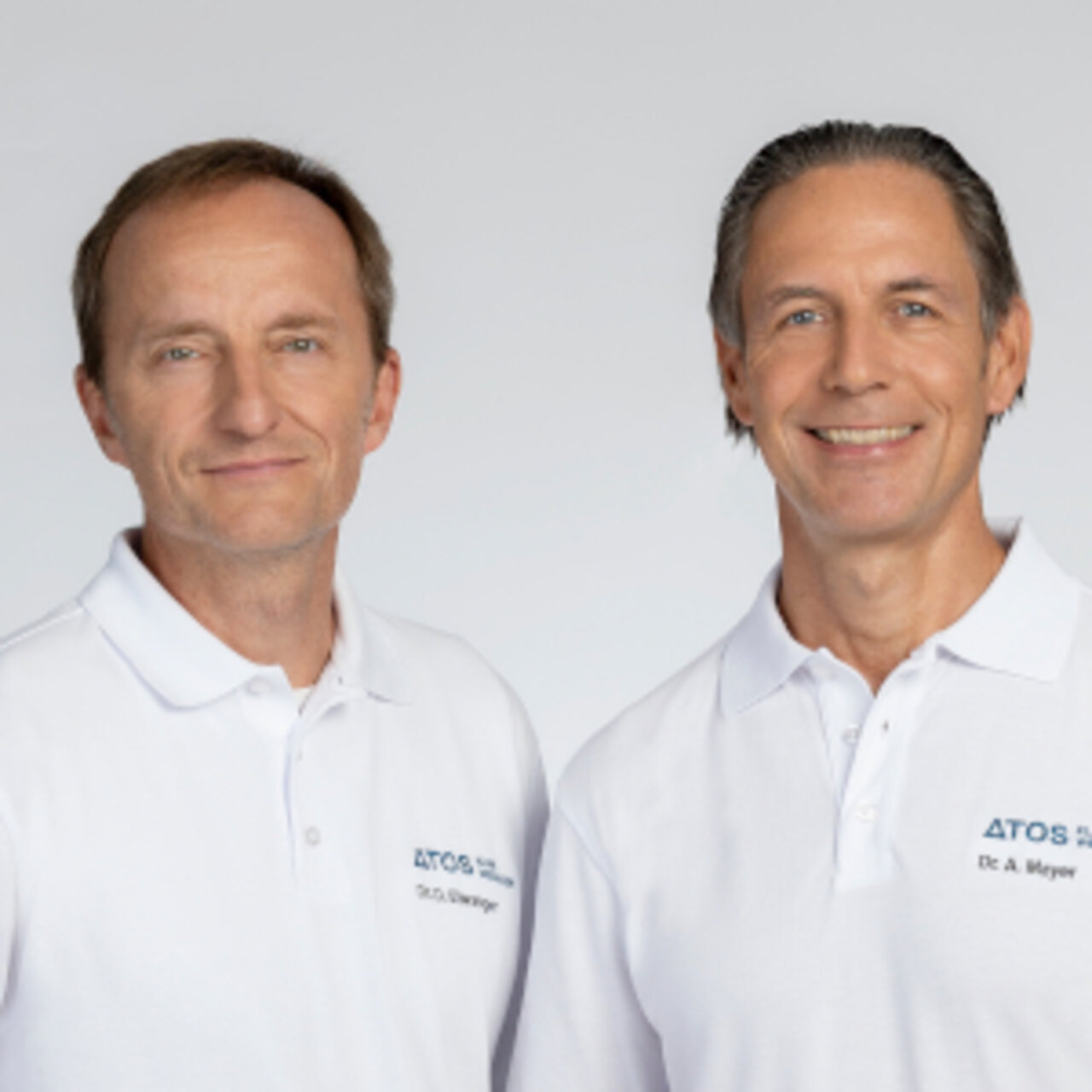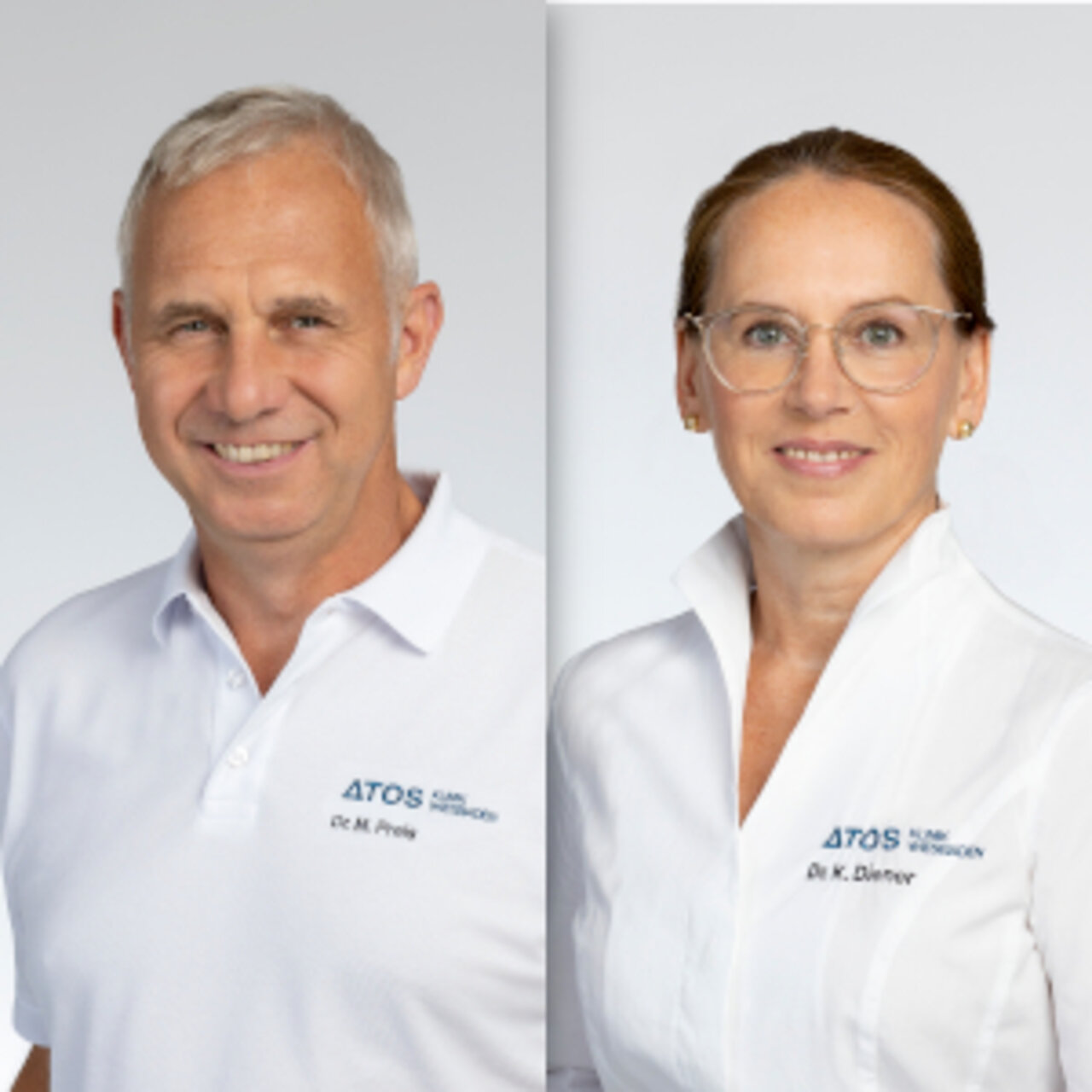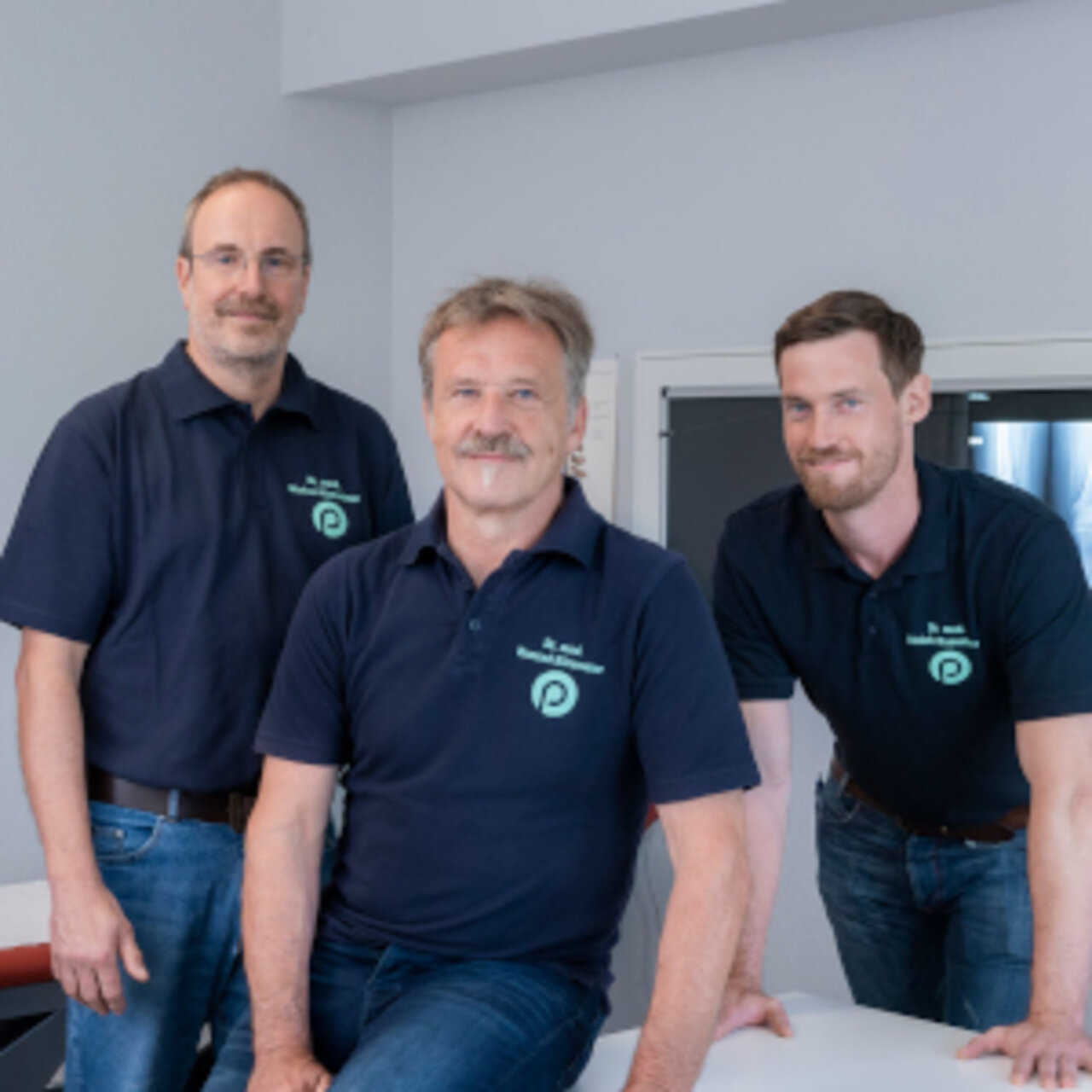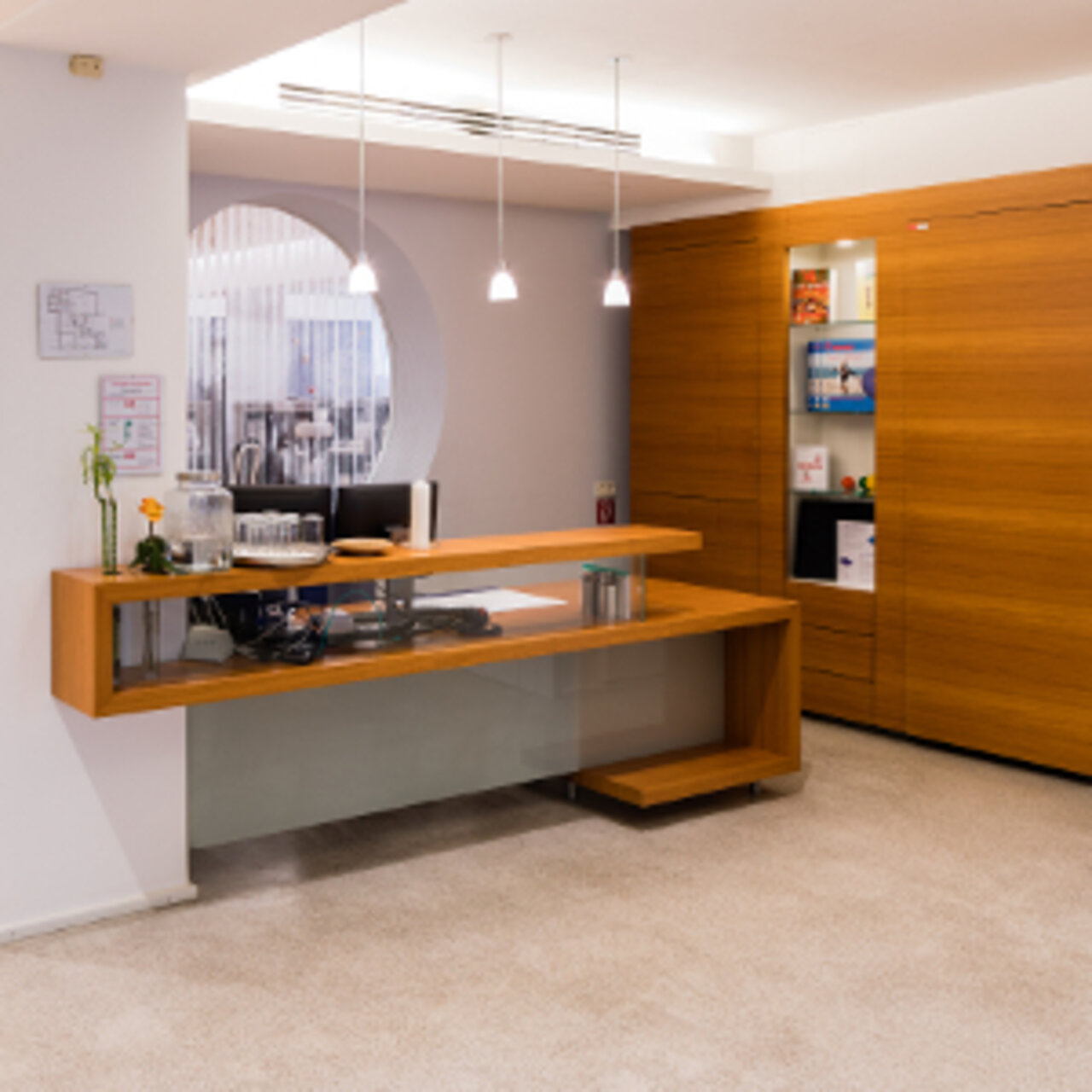Specialists in Knee Osteoarthritis
19 Specialists found
Information About the Field of Knee Osteoarthritis
What is Osteoarthritis of the Knee?
Knee osteoarthritis, also professionally known as gonarthrosis, is early wear and tear of the knee joint, including the joint cartilage. Women are affected far more frequently than men. In this degenerative, non-inflammatory destruction of the knee joint, only some or all bones of the knee joint may be affected (femur, tibia, and patella). Knee osteoarthritis is one of the most common diseases in joints in older age. Knee osteoarthritis usually begins in the fifth decade of life.
What Causes Knee Osteoarthritis?
The triggers of gonarthrosis are manifold. The orthopedist distinguishes between a primary cause and a secondary cause. The cause of primary knee osteoarthritis is still unclear.
The secondary form can be triggered by axial malalignment, knee injuries, or inflammation. However, various metabolic and hormonal disorders (uric acid gout, chondrocalcinosis, etc.) can also lead to progressive destruction of the knee joint.
Since knee osteoarthritis can be triggered by permanent overloading (e.g., overweight, certain occupational activities), it was classified as an occupational disease a few years ago.
Symptoms of Knee Osteoarthritis
The main characteristic of knee osteoarthritis is knee pain. Initially, the pain occurs only when the knee is fully extended or flexed, and later also under any load. Usually, the active movement is accompanied by an unpleasant crunching (crepitation) in the joint.
The so-called morning stiffness is particularly noticeable. You can imagine this as loosening a tight screw. After periods of rest, the knee joint is very stiff and slightly painful. After some time of movement (30 min.), it is again easy to move and well lubricated (synovial fluid).
Over time, pain can lead to a restriction of movement. As a result, full flexion or extension of the knee joint is avoided. The tendons begin to shorten (flexion contracture), which is followed by impaired walking, instability, increasing axial malposition of the knee joint, and the resulting insecurity of walking.
If the knee osteoarthritis is accompanied by an inflammation of the joint (knee synovitis), it is called activated gonarthrosis. It is much more painful and indicated by swelling and overheating of the knee joint.
How is Gonarthrosis Diagnosed?
In most cases, the symptoms, as mentioned above, lead the patient to a knee specialist. Here, the doctor will initially review the medical history or suffering history. During the subsequent physical examination, the orthopedic surgeon will notice movement restrictions, malpositions, and bony distension.
An appointment with a radiologist usually follows. The radiologist can determine typical osteoarthritic changes based on x-rays. These include new bone formations (osteophytes) on all bones involved in the joint and a narrowing of the joint space.
Another helpful diagnostic method is the joint puncture, where some joint fluid is obtained under sterile conditions, which then shows typical changes in the analysis.
Treatment of Knee Osteoarthritis
The treatment options for knee osteoarthritis are very versatile. They range from conservative, non-surgical therapy, to minimally invasive arthroscopy, to total joint replacement. Treatment aims to relieve the pain and to improve joint function and the associated everyday movements.
In general, conservative therapy aims to slow down the progression of wear and tear of articular cartilage in the knee joint, as regeneration or regrowth does not occur.
Depending on the severity of the knee osteoarthritis, various surgical procedures are recommended. In the beginning, there are usually minimally invasive knee arthroscopies (joint endoscopy with keyhole technique). Furthermore, in cases with severe bow-leg or knock-knees position, a corrective osteotomy can be recommended. The axis of the leg is straightened again to allow consistent wear of the cartilage in the knee joint.
At the end of the surgery, partial or total joint replacement is carried out, in which the joint surfaces of the knee are replaced.
Conservative Therapy
If the patient suffers so-called secondary knee osteoarthritis, i.e., without a previous injury to the joint, the cause of the knee osteoarthritis is usually a disproportion between the load and resilience of the joint structures such as cartilage, menisci, and ligaments. In the case of primary knee osteoarthritis, the patient has often suffered one or more knee injuries, such as torn menisci, torn cruciate ligaments, or fractures of the joint partners (tibia, femur, and patella).
Preventive measures are not only a significant part of prevention but also of therapy and slowing down the progress of cartilage wear in the knee joint.
Recommended measures are:
- Weight reduction in case of overweight, nutritional adjustment (BMI > 25)
- Reduction of knee straining activities and exercises in everyday life
- Exercising a sport that is easy on the joints, such as aqua jogging, swimming, cycling, as a lack of exercise reduces cartilage nutrition, and osteoarthritis progresses faster.
As a further conservative treatment, patients with knee osteoarthritis are also recommended to undergo physiotherapy (manual therapy, physical therapy) and movement training to improve strength, mobility, and endurance. This allows the knee to be actively stabilized and controlled better, which positively affects pain and everyday activities.
Orthopedic insoles, shoes, or orthoses can also help against pain.
Drug therapy starts with the usual anti-inflammatory painkillers (e.g., Ibuprofen) since osteoarthritis is accompanied by inflammation of the synovial membrane of the joint. Paracetamol is not recommended.
If the combination of preventive measures, physical training, painkillers, and aids is not promising, there is also the possibility of injections into the arthritic knee joint. This involves injecting either anti-inflammatory drugs or substances that are said to have cartilage-regenerating properties into the joint under sterile conditions. However, this should only be carried out by an experienced doctor.
Injection therapy
The use of needles or injections is usually used when conventional therapy with painkillers and other conservative methods such as movement training, weight reduction, and the supply of aids is no longer sufficient.
If the affected knee joint is severely swollen and painful to move, it can be punctured with a puncture needle, i.e., fluid is withdrawn from the joint, which results in pain relief and improved mobility, as the structures in the joint are relieved.
It is also possible to inject corticosteroids (anti-inflammatory medication) into the joint space to relieve the pain situation for a short time (a few weeks). It is strongly recommended that this technique is only carried out by particularly experienced doctors.
Hyaluronic acid
If the standard therapy with pain medication is no longer sufficient, hyaluronic acid can be injected intra-articular (into the joint). The scientific results about the effects are not clear, but a pain-relieving effect is attributed.
Combining painkillers and hyaluronic acid as an injection is also recommended when patients have an inflammatory episode of their osteoarthritis.
This therapy should be carried out by an experienced physician to exclude side effects and negative consequences as far as possible.
Alternative Therapy Methods
As alternative healing methods from natural medicine, white cabbage wraps can have a pain-relieving effect on knee osteoarthritis pain and several medicinal herbs that are said to have an osteoarthritis-relieving effect.
According to experts, acupuncture, which has a positive effect on symptoms of knee osteoarthritis, can also be used.
Electrotherapy with TENS is also recommended for pain reduction. Homeopathy, on the other hand, is not attributed to a demonstrable effect.
Joint Preserving Surgeries
If the patient's symptoms such as pain and restricted mobility can no longer be controlled with conservative methods such as therapy and pain management, the treating surgeon first tries to choose a joint-preserving surgical method. This involves arthroscopic surgery, in which, according to the findings, loose joint bodies, disturbing menisci, and bone protrusions are removed through small skin incisions in a minimally invasive way. Removing inflamed joint skin and cleaning the joint can also be useful.
If the patient suffers a severe deformity of the leg axis (bow-legs/knock-knees), which results in an inconsistent distribution of forces with irregular wear of the cartilage, an osteotomy (straightening of the leg axis) can be carried out.
Knee Prosthesis
If the cartilage or joint is affected by osteoarthritis to the extent that injections and arthroscopic (joint endoscopic) procedures do not provide relief to the patient, it is replaced by an implant. The patient's bone and joint material are used as sparingly as possible since it is impossible to replace joint implants as often as desired.
If the osteoarthritis is only in one part of the knee joint, e.g., on the inside or outside, or between the femur and patella, a partial joint replacement between the affected joint surfaces is an effective solution.
Since knee osteoarthritis in an advanced stage usually develops further, it frequently results in pangonarthrosis (knee osteoarthritis involving the entire knee joint), which must be treated surgically with a knee TEP (total knee endoprosthesis).
If a knee TEP is placed too early, it can become problematic. The durability of such a prosthesis is about 10-20 years, and changing the prosthesis is associated with risks. Likewise, a necessary joint replacement should not be delayed too long to keep damage to the surrounding tissue, such as ligaments, muscles, and bones, to a minimum.
After joint replacement surgery, patients can generally expect an improved quality of life, reduced pain, and better mobility.
What Are the Prognoses and the Course of the Disease in Knee Osteoarthritis?
If left untreated, knee osteoarthritis leads to constant pain, instability of the joints, and even severe movement restrictions. This is where therapy can help.
Whether it is a conservative therapy with muscle build-up and injections or a knee prosthesis is placed by the orthopedic surgeon if the knee joint cannot be maintained, both variants offer you the opportunity to explore the world on foot without pain and with old élan.
Knee endoprostheses have excellent survival times. For example, a maximum of five percent of patients has to change their full prostheses within ten years.
Sources:
- dgrh.de/qualitaetsmanual3_32.html
- www.awmf.org/leitlinien/detail/ll/012-008.html
- www.aerztezeitung.de/medizin/krankheiten/skelett_und_weichteilkrankheiten/arthrose/article/854647/kniegelenksarthrose-bewegung-schmerz.html
- Arastéh, Keikawus; Baenkler, Hanns-Wolf : Innere Medizin. 2., vollst. überarb. und erw. Aufl. Stuttgart: Thieme 2009.
- Herold, Gerd: Innere Medizin. Köln, Eigenverlag 2012.
